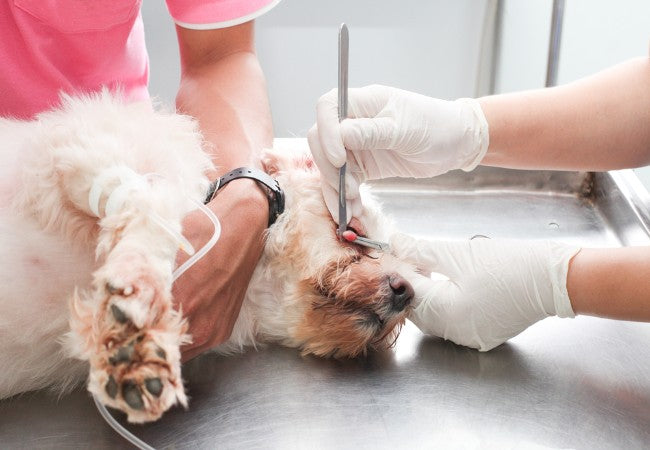Vet Guide to 2025: Most Common Dog Eye Injuries — Symptoms, Treatment & Smart Monitoring 🐶🩺

In this article
Vet Guide to 2025: Most Common Dog Eye Injuries — Symptoms, Treatment & Smart Monitoring 🐶🩺
By Dr. Duncan Houston BVSc
Dog eyes are delicate, and injuries—from rough play, plants, or foreign objects—are surprisingly common. I’m Dr Duncan Houston BVSc, here to help you spot the most frequent eye traumas, take urgent first‑aid steps, and harness the power of Ask A Vet.🩺✨
1. Why Eye Injuries Matter
- Eyes are easily injured and at risk of vision loss if untreated—delays can lead to ulceration, infection, or even loss of the eye.
- Common causes include running through brush, car rides with head out the window, dog fights, or objects like sticks and plant spines.
2. Top 5 Common Eye Injuries
- Corneal abrasion (scratches): Painful, frequent blinking, tearing—often from rough play or rubbing.
- Corneal ulcer: Deep corneal wounds that risk infection—symptoms include cloudiness, redness, and discharge.
- Foreign body: Debris like dust, grass, or thorns lodged in the eye, causing squinting, tearing, swelling.
- Proptosis: Eye popped from its socket—emergency requiring immediate vet care.
- Eyelid & orbital trauma: Cuts, swelling, bruising, or fractures to surrounding tissue—painful and needing professional treatment.
3. Signs You Should Never Ignore
- Excessive tearing, squinting, blinking or pawing at the eye.
- Cloudiness, redness, blood in eye, or visible wounds.
- Protruding eyeball, inability to blink, or trauma to surrounding bone.
- Discharge (green/yellow), swelling, sudden vision loss or pain.
4. Immediate First‑Aid Steps
- 🧼 Gently flush with sterile saline—no pressure.
- No rubbing—use an E-collar to prevent further trauma.
- Cover the eye loosely to avoid scratching; transport to vet immediately.
5. Veterinary Treatment Options
- Corneal injuries: Fluorescein dye test, antibiotic/anti-inflammatory drops, possible bandage contact lens.
- Ulcers: Graded by depth—some require surgery, UV protection, and hospitalization.
- Foreign bodies: Flushing and removal under sedation; follow-up to monitor for ulceration.
- Proptosis: Emergency surgery, eye replacement, or removal depending on severity.
- Eyelid/orbital trauma: Wound repair, fractures, suturing; antibiotics and pain relief.
6. Prevention Tips
- Supervise in brushy or wooded areas; avoid car windows down at high speed.
- Trim facial hair to reduce irritation; keep nail trims short.
- Use dog goggles (e.g., Woopf protective eyewear) during outdoor activities or car rides.
7. Monitor & Track Healing
- Ask A Vet App: Upload photos, track recovery, receive guidance on drop schedules and follow‑ups.
FAQs
- Q: Can a scratched cornea heal alone?
- Superficial scratches may heal in a few days, but deeper ulcers need vet treatment—delaying risks of infection.
- Q: What is proptosis?
- Proptosis is an emergency—when the eyeball pops out. Immediate surgery is needed to save vision or relieve pain.
- Q: When should I use an E‑collar?
- Always use one after eye injury—preventing rubbing or scratching is critical for healing.
Conclusion 💡
Eye injuries in dogs can escalate rapidly—what starts as a small scratch can threaten vision. Immediate flushing, E‑collars, and vet care are essential. Leverage smart monitoring tools like Ask A Vet. Together, we protect sight and support full recovery—your pup deserves nothing less! 🐾❤️






